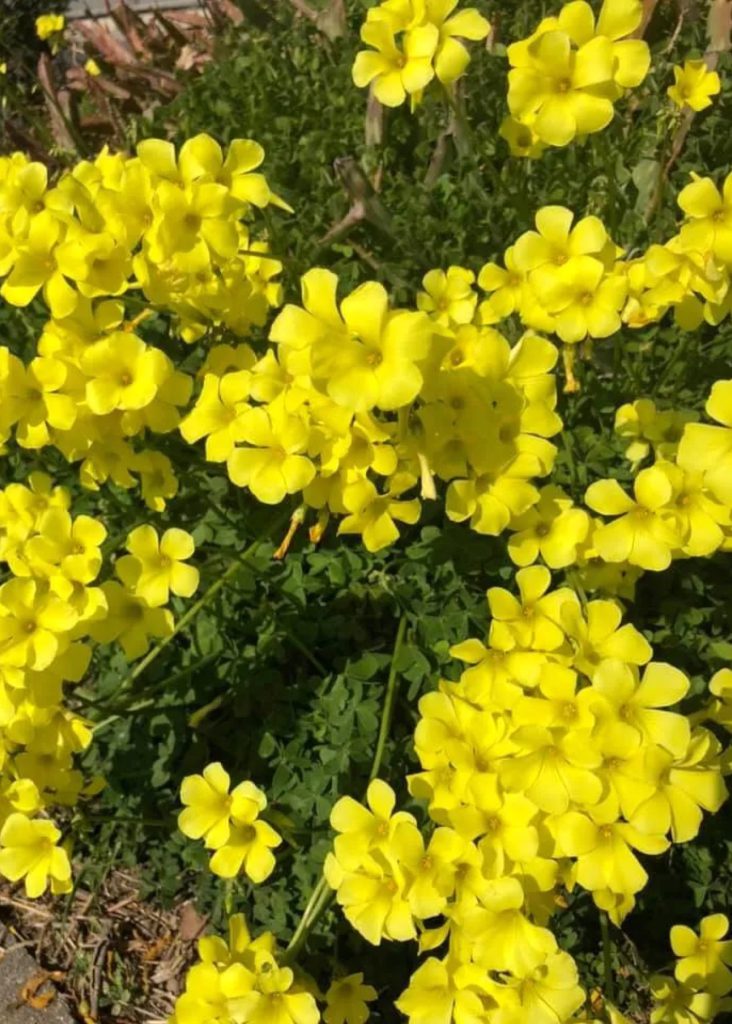
Okibana Katabami (Bermuda buttercups) along the road are in full bloom. Originally, Katabami (Oxalis) was native to Japan, but this Okibana Katabami was imported for ornamental use in the 1890s and escaped to the outdoors. Like all Katabami, it blooms as the sun rises and closes in the evening. Flowers remain closed on cloudy skies and rainy days. Katabami, which is fertile and has strong vitality, begins to bloom in the middle of the cold of January and continues to bloom until before the rainy season. It is also used by the family crests of Sengoku daimyo who wish for the prosperity of their descendants because of their vitality, and is well known as one of the 10 major family crests in Japan. In foreign countries, on the contrary, it seems that extermination is often treated as a serious troublesome person. When I was a kid, I remembered playing with Katabami leaves by polishing a 10-yen coin to make it shiny.
道沿いのオオキバナカタバミが勢いよく花開いています。日本には元々カタバミは自生していましたが、このオオキバナカタバミは1890年代に観賞用に輸入されたものが野外に逸出したものです。カタバミの仲間は全部そうですが、日が昇るとともに花開き、夕方には花を閉ざします。曇り空、雨の日は花は閉ざしたままです。繁殖力が旺盛で強い生命力を持つカタバミは1月のまだ寒い最中から咲き始め、梅雨入り前まで咲き続けます。また、その生命力が強さが子孫繁栄を願う戦国大名達の家紋にもつかわれ、日本の10大家紋のひとつとしてもよく知られています。外国では、逆に、駆除が大変な厄介者として扱われることも多いようです。子供の頃、カタバミの葉で10円玉を磨いてピカピカにして遊んだことを思い出しました。
